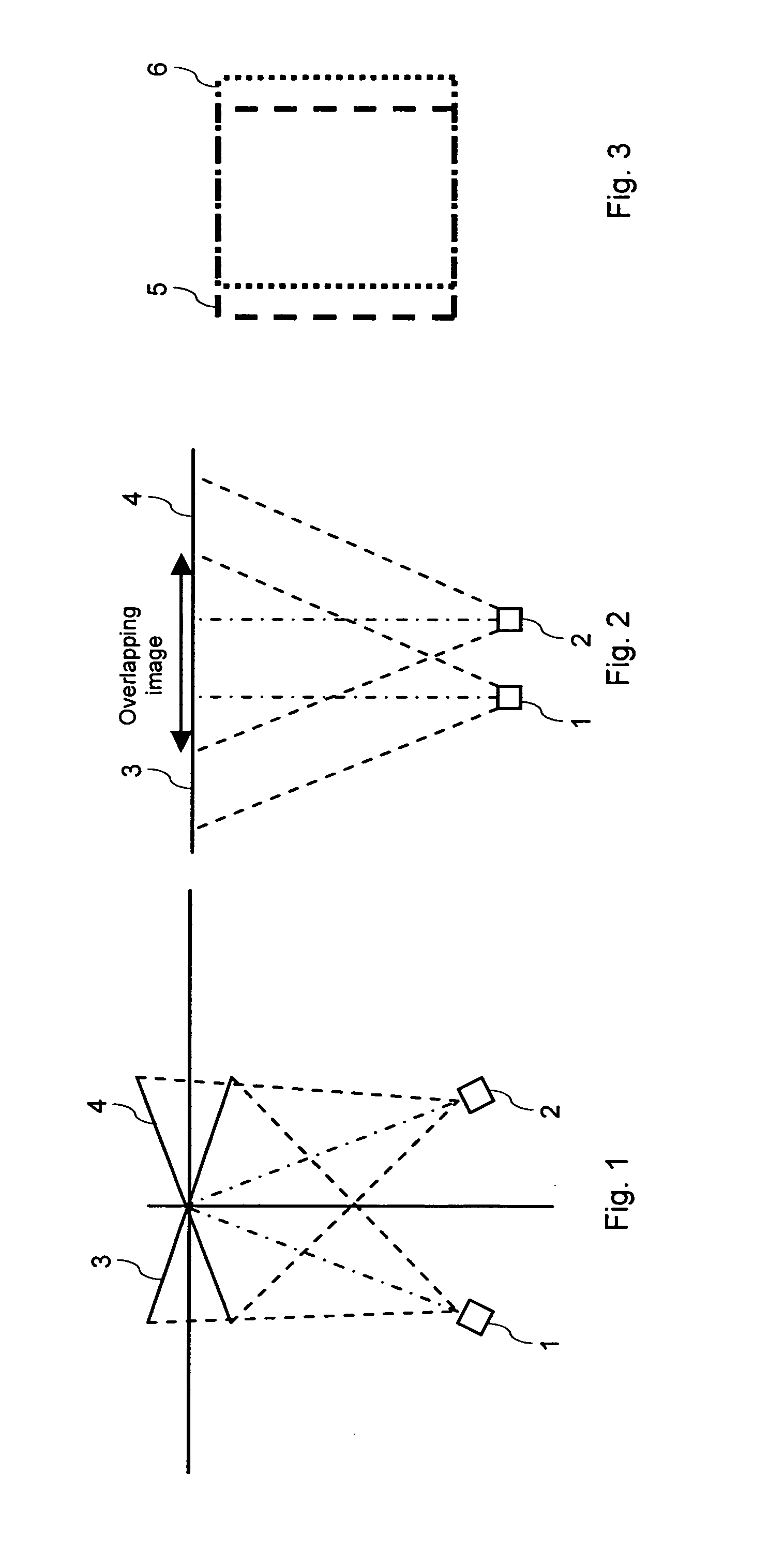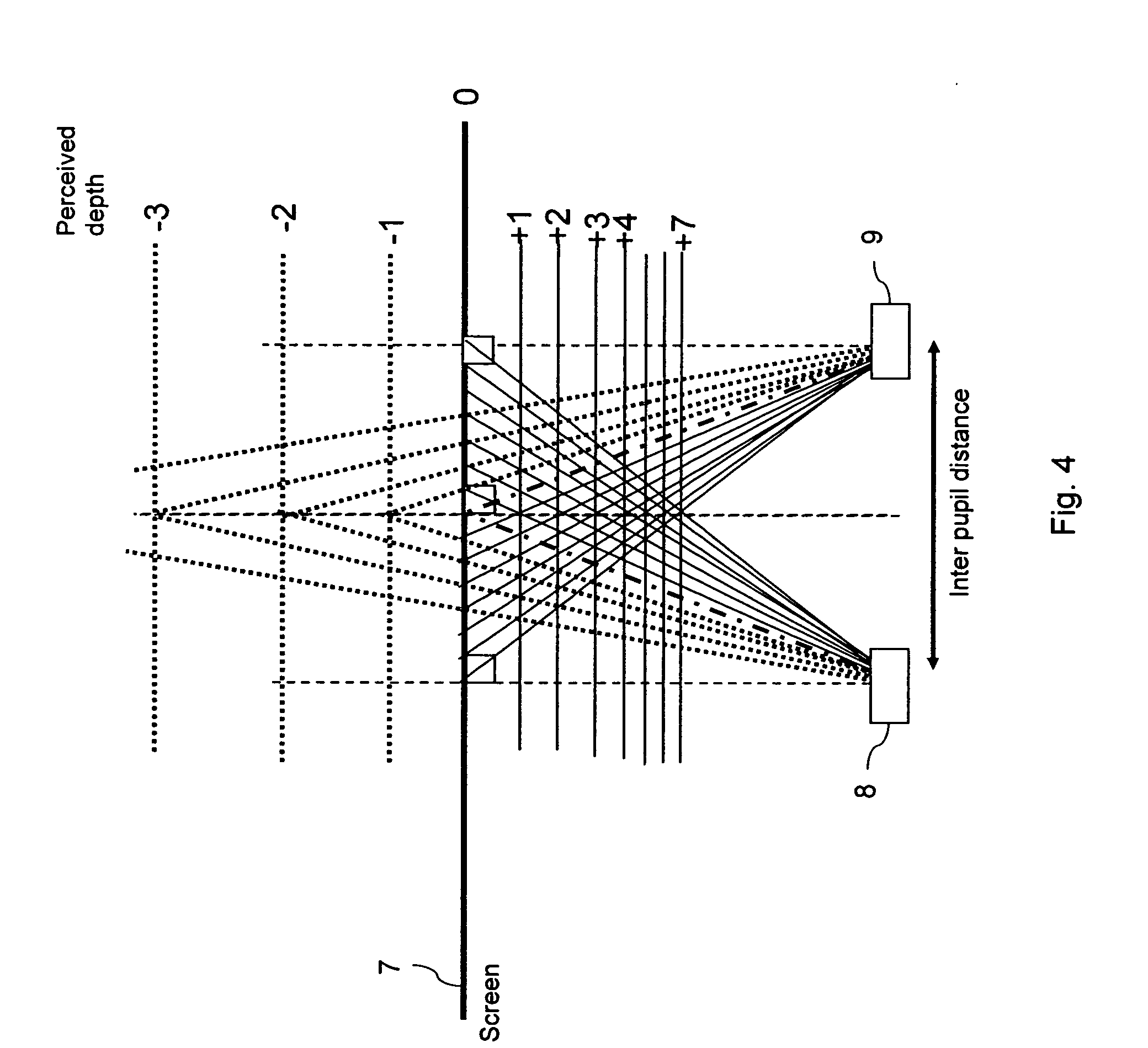Supporting a 3D presentation
a three-dimensional image and support technology, applied in the field of supporting a three-dimensional image, can solve the problems of very apparent, low quality of perceived 3d image, minute inconsistencies, etc., and achieve the effect of reducing cropping losses, facilitating camera mounting, and increasing flexibility
- Summary
- Abstract
- Description
- Claims
- Application Information
AI Technical Summary
Benefits of technology
Problems solved by technology
Method used
Image
Examples
Embodiment Construction
[0095]FIG. 9 is a schematic block diagram of an exemplary apparatus, which allows compensating for a misalignment of two cameras of the apparatus by means of an image adaptation, in accordance with a first embodiment of the invention.
[0096] By way of example, the apparatus is a mobile phone 10. It is to be understood that only components of the mobile phone 10 are depicted, which are of relevance for the present invention.
[0097] The mobile phone 10 comprises a left hand camera 11 and a right hand camera 12. The left hand camera 11 and the right hand camera 12 are roughly aligned at a predetermined distance from each other. That is, when applying the co-ordinate system of FIG. 6, they have Y, Z, θX, θY and θZ values close to zero. Only their X-values differ from each other approximately by a predetermined amount. Both cameras 11, 12 are linked to a processor 13 of the mobile phone 10.
[0098] The processor 13 is adapted to execute implemented software program code. The implemented s...
PUM
 Login to View More
Login to View More Abstract
Description
Claims
Application Information
 Login to View More
Login to View More - R&D
- Intellectual Property
- Life Sciences
- Materials
- Tech Scout
- Unparalleled Data Quality
- Higher Quality Content
- 60% Fewer Hallucinations
Browse by: Latest US Patents, China's latest patents, Technical Efficacy Thesaurus, Application Domain, Technology Topic, Popular Technical Reports.
© 2025 PatSnap. All rights reserved.Legal|Privacy policy|Modern Slavery Act Transparency Statement|Sitemap|About US| Contact US: help@patsnap.com



